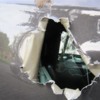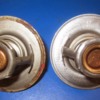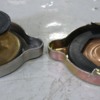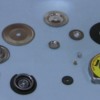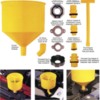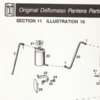And we once again demonstrate the problems in naming these tanks.
PLEASE:
Refer to the nice, colorful diagram posted earlier in this thread. The tank names listed are the most common names used for these tanks.
Simon previously said - "the Expension tank must have a pressurized cap"
Which I said is wrong. Because it is wrong.
Then Simon wrote -
quote:
Larry
thats exactly what I say ,the first tank is the pressure tank
So Simon, in just this thread, has called the short tank -
expansion tank
pressure tank
first tank
No wonder it is so hard to understand our cooling systems and how they work.
While some cars may now have two tanks of the same size, from the factory there was the shorter
PRESURE tank and the taller EXPANSION tank.
In any case, we still haven't solved this overheating problem.
Our UK owner - do you have a name?? - said it "boils over".
We need to better understand what that means. Water coming out? If so, where? Boiling noises? If so, from where?
He said the belts are tight and pulleys are turning. Was this observed with the engine running? Or a static test? Have you removed the water pump belt and rotated the pump by hand?
Have the under car pipes been inspected for damage, that is, crushed somehow?
There is still something wacky here.
I have heard of the pump's internal impeller loosening from the pulley shaft, so while it turns on the outside pulley, the impeller isn't turning. A long shot, but all needs to be considered.
Please, dear UK friend, more specific details. The more the better. Troubleshooting from across The Pond needs all the descriptive text possible.
Larry



